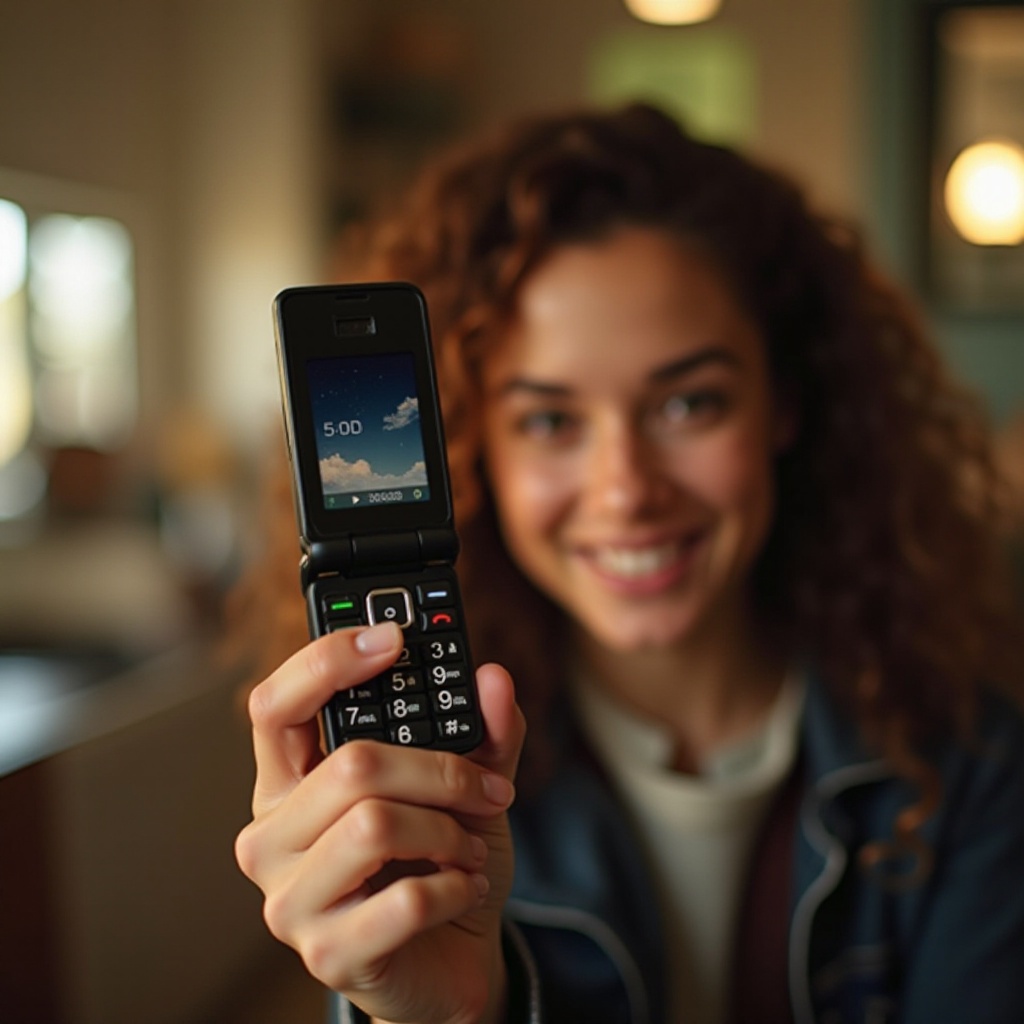Introduction
Flip phones marked a significant transformation in mobile technology. Their compact, foldable design offered a stark contrast to the bulky handsets of the past, capturing the imagination of consumers around the world. However, understanding the exact moment when these devices became widely accessible requires a deeper look into their development, the technological advancements that played a crucial role, and the market dynamics at the time.

The Early Development of Flip Phones
The journey of flip phones began in the early 1990s. The first-ever commercially successful flip phone, the Motorola StarTAC, hit the market in 1996. Known for its revolutionary design, the StarTAC was compact and convenient, unlike any other phone of its time. Nevertheless, its accessibility was limited due to high costs and limited production volumes.
This period laid the groundwork for future enhancements. Early developers faced challenges such as incorporating smaller keypads, integrating better displays, and improving battery life—all essential for mainstream adoption. Additionally, early flip phones focused more on voice calling and SMS, with minimal emphasis on features like cameras or internet access.

The Catalyst for Accessibility: Technological Advancements and Market Shifts
A few significant technological advancements and market shifts paved the way for making flip phones more accessible.
-
Enhanced Miniaturization: The late 1990s and early 2000s witnessed significant advancements in miniaturization technology. Components such as processors, batteries, and displays became smaller and more efficient. This enabled manufacturers to produce compact flip phones without compromising on functionality.
-
Network Expansion: The shift from analog to digital networks played a crucial role. Digital networks like GSM and CDMA offered better voice quality, wider coverage, and the introduction of mobile internet services. This expanded functionality made flip phones more appealing to a broader audience.
-
Economies of Scale: As global demand for mobile phones increased, manufacturers benefited from economies of scale. Mass production led to reduced costs per unit, which were passed down to consumers in the form of lower retail prices.
-
Carrier Subsidies: Mobile carriers began to realize the potential of offering subsidized phones in exchange for long-term contracts. This business model significantly reduced the upfront cost for consumers and played a major role in making flip phones more accessible to the masses.
These catalysts collectively set the stage for the mainstream acceptance of flip phones.
2004: The Year Flip Phones Became Mainstream
The culmination of these technological advancements and market shifts came in 2004, a landmark year for flip phones. This period saw a surge in the popularity of these devices, making them mainstream for several reasons:
-
Innovative Models: 2004 witnessed the release of some iconic flip phone models, such as the Motorola RAZR V3. These phones were not only technologically advanced but also aesthetically pleasing, capturing the attention of style-conscious consumers.
-
Affordable Prices: The combination of economies of scale, improved manufacturing techniques, and carrier subsidies brought down the prices of flip phones, making them affordable for a wider demographic.
-
Wide Carrier Support: Mobile carriers around the world expanded their network coverage and offered attractive plans, making it easier for consumers to access and use flip phones.
-
Marketing Campaigns: Aggressive marketing campaigns by both manufacturers and carriers highlighted the benefits of flip phones, further boosting their popularity.
As a result, by the end of 2004, flip phones were no longer a luxury item but a household staple.

Impact on Mobile Phone Market and Consumer Behavior
The mass adoption of flip phones had a profound impact on the mobile phone market and consumer behavior.
-
Innovation Drive: The success of flip phones prompted manufacturers to continue innovating. This period saw the introduction of new features like integrated cameras, color displays, and enhanced multimedia capabilities.
-
Consumer Expectations: Flip phones raised consumer expectations. Users now demanded sleek designs, multifunctionality, and affordable pricing, setting a benchmark for future mobile devices.
-
Market Dynamics: The increased competition among manufacturers led to rapid technological advancements. Companies that could not keep up with innovations saw their market share decline.
-
Connectivity: Mobile phones became not just a communication tool but also a fashion accessory and a status symbol.
This era also marked the beginning of mobile phones being integrated into daily life, foreshadowing the smartphone revolution.
Long-lasting Legacy of Flip Phones and Their Modern-Day Relevance
Flip phones did not just fade away with the advent of smartphones. They left a lasting legacy that continues to influence modern mobile technology.
-
Durability and Design: The clamshell design offered inherent durability, protecting the screen and keypad from damage—an attribute that modern flip phones like the Samsung Galaxy Z Flip have revived.
-
User Experience: Flip phones provided a tactile, satisfying user experience with their physical keypads and audible snap. Modern devices strive to replicate this level of user engagement through haptics.
-
Nostalgia and Practicality: Some consumers still prefer flip phones for their simplicity, durability, and battery life. These phones remain relevant in markets that value these attributes over the latest technology.
-
Security and Minimalism: In the era of data breaches, some users opt for flip phones due to their limited connectivity options and simplicity, reducing the risk of cyber-attacks.
Flip phones, it seems, have etched their place in the annals of mobile technology history while continuing to find niches in the modern market.
Conclusion
Flip phones played a pivotal role in the evolution of mobile phones, reaching a peak in accessibility around 2004. They transformed consumer expectations and set design standards that influence mobile technology to this day. Their blend of affordability, functionality, and style made them a household name and left a lasting legacy that modern devices still draw inspiration from. Understanding the factors that contributed to their mainstream success offers valuable insights into the dynamics of technological adoption and consumer behavior.
Frequently Asked Questions
What were the most popular flip phone models in 2004?
One of the most popular models in 2004 was the Motorola RAZR V3, known for its sleek design and innovative features.
How did carrier subsidies contribute to flip phone accessibility?
Carrier subsidies reduced the upfront cost of flip phones, making them affordable for a larger consumer base, in exchange for long-term service contracts.
Are flip phones still available and used today?
Yes, flip phones are still available and preferred by users looking for durability, simplicity, and extended battery life.

